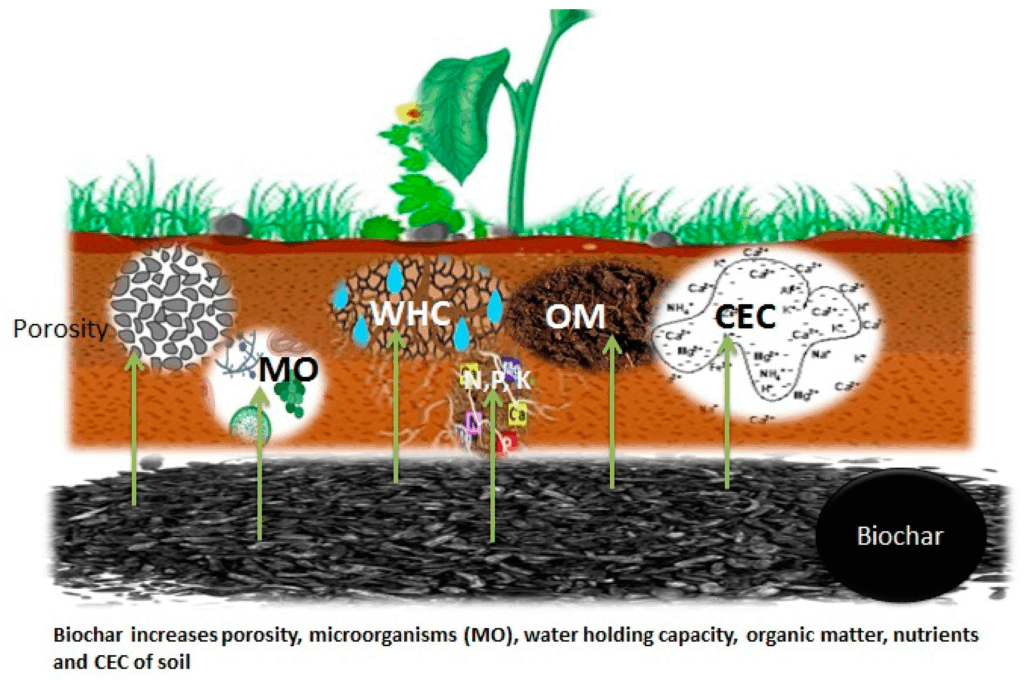Biochar yields triple win for cotton: Healthier soil, less water, and 87% less nitrogen runoff
New study shows that applying sugarcane-derived biochar to cotton fields offers a sustainable path forward for one of agriculture’s most resource-hungry crops.
By Emma Bryce in Anthropocene magazine August 8, 2025

Adding biochar to the soil not only creates better growing conditions for cotton, but also reduces nitrogen run-off by up to 87%. These findings from a new research paper add to a growing body of work that shows the triple benefits biochar can have on crops, soil health, and the wider environment.
Using biochar made from sugarcane bagasse, the researchers tested out the carbon-rich, pyrolized material in a field experiment in the Lower Mississippi Delta, where fields of cotton are a common sight. Cotton is an extremely resource-intensive crop, inhaling over 200 liters of water per kilo on average in this region. It also consumes a lot of fertilizer, with large amounts showered over the soil where it grows.
Cotton is an extremely resource-intensive crop, inhaling over 200 liters of water per kilo on average in this region.
Accentuating the problem, cotton is often cultivated on sandy loam soil that has a weaker, more porous structure through which water—and fertilizer nutrients—easily flow.
These twin environmental challenges were the focus of the researchers’ experiment. Between 2020 and 2022, they applied three different treatments of biochar in varying quantities to rows of cotton, and compared them against an experimental plot where no biochar was applied. Over the course of the growing period, the researchers took random samples of the soil for analysis.
These samples held some interesting telltale clues. The soil where 20 Mg of biochar had been applied per hectare showed a significant 63% reduced concentration of nitrate, compared to the control site. The research team also measured samples for the volume of water they contained, and used soil probes on the research plots to determine the volume of run-off from the soil.
Their efforts revealed two intriguing things. Firstly, that the soil on biochar-treated plots retained more water than those without the soil amendment. This is because biochar creates a more stable, varied structure that inhibits the freeflow of water, and also provides more matter to absorb water, compared to sandy loam soils.
The climate impact of cotton depends on how often you wash it and how long you wear it
Below about 15cm, the biochar’s stabilizing effect was reduced. But nevertheless its effect on topsoil seemed to provide a powerful knock-on benefit, because the run-off on biochar-treated plots contained strikingly lower concentrations of nitrates, the researchers found.
In fact, at soil depths of between 46cm and 81cm, biochar applications reduced nitrate losses through run-off by between 49 and 87%, and 42 and 102% during the fallow period of the cotton harvest, compared to the control.
The researchers also think that nitrate run-off was better-controlled under the treated cotton, because biochar increases the amount of soil organic carbon in the earth, which is a food source for millions of soil microorganisms. These microbes consume and fix nitrogen, too—so, as biochar increases, microorganisms fix more nitrogen, leaving less to slip into water and seep into the surroundings.
Now that the researchers have identified an effective, simple solution to some of cotton’s biggest challenges, what are the future plans for this work? The researchers say that they intend to scale up their experiments to the field level, and partner with farmers to evaluate the benefit of biochar on their lands.
They also hope to see whether biochar can deliver the same, or similar, benefits on fields of corn and soy.
Sharma et. al. “Biochar impact on soil properties and soil solution nutrient concentrations under cotton production.” Journal of Environmental Management. 2025.
